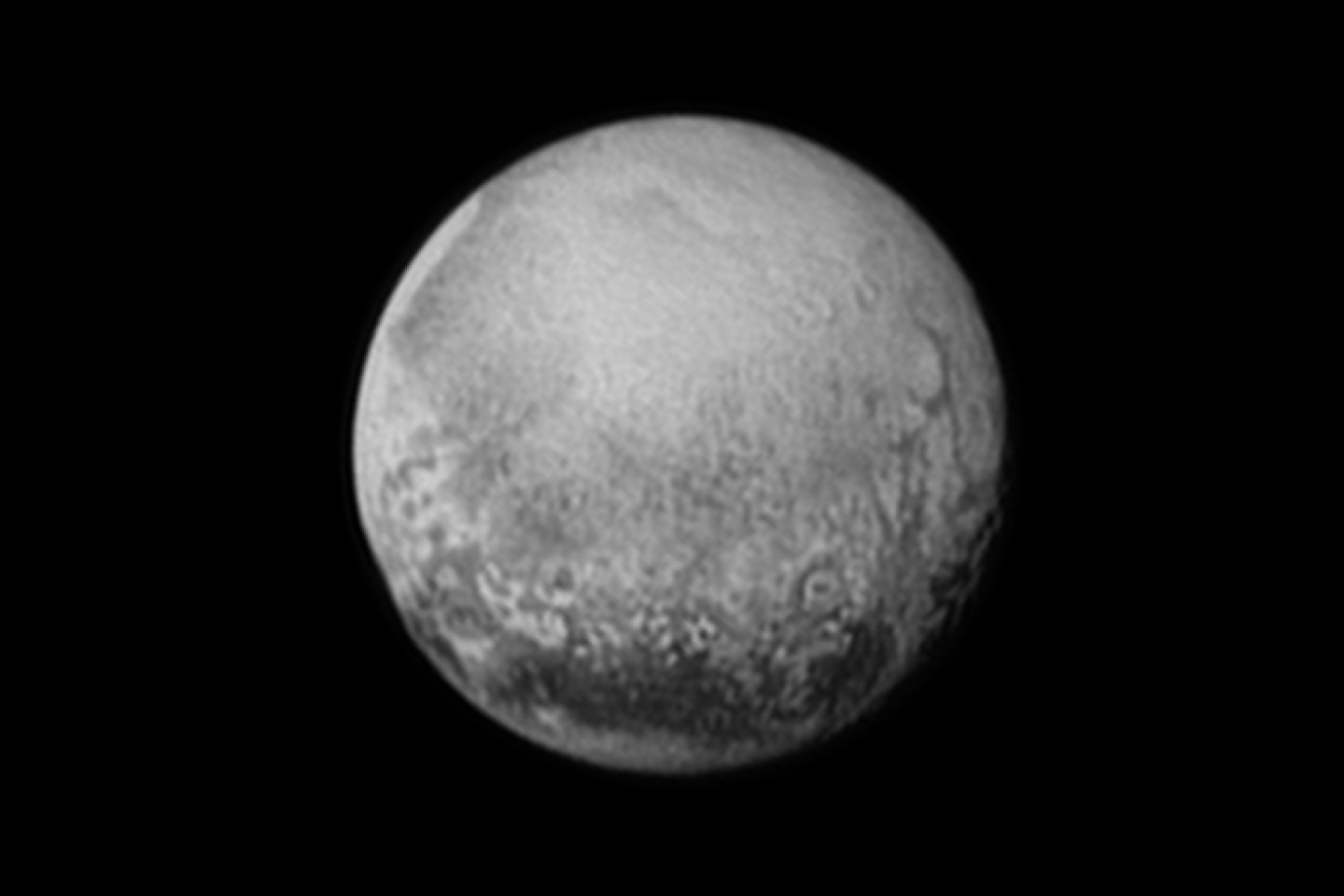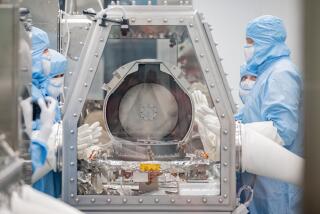Almost there! Pluto looms larger as New Horizons spacecraft closes in
New Horizons is in the home stretch. With fewer than 500,000 miles and less than a day to go until the NASA spacecraft whizzes by Pluto, the images it’s lobbing back across the roughly 3-billion-mile distance between Earth and Pluto are continuing to turn up fresh surprises.
Pluto was once little more than a blurry dot in the sky; now, the NASA spacecraft’s images reveal a complex surface with signs of ridges and cratering. Geologically speaking, there’s a lot going on on this little world.
After a 9 1/2-year journey through space, New Horizons will fly by Pluto on July 14 at 30,800 miles per hour, coming within roughly 7,750 miles of the dwarf planet. But it’s been taking images on its approach that are already changing the way we see this previously unknown world.
A July 11 view of Pluto reveals a circular feature with a dark spot in the middle, reminiscent of a bull’s-eye, that could potentially be a large crater, as well as linear structures in the southern hemisphere that might be cliffs.
On the edge but rotating into view in this image is the bright “heart” feature identified in earlier images, as well as a dark region that’s shaped like a whale.
Scientists have now also been able to answer a fundamental question about Pluto – what size it really is. Based on the new data from the spacecraft’s Long Range Reconnaissance Imager, or LORRI, Pluto appears to be 1,473 miles in diameter, which is larger than some previously thought.
“The size of Pluto has been debated since its discovery in 1930. We are excited to finally lay this question to rest,” mission scientist Bill McKinnon of Washington University in St. Louis said in a statement.
Because Pluto is larger but has the same known mass, that means its density is a little lower than scientists thought – which means there’s a little more ice within it than expected.
Pluto’s moon Charon, which is roughly the size of Texas, is the largest moon relative to its parent body’s size in our Solar System – and it’s serving up surprises of its own. A July 12 image of the moon shows what appears to be a giant crater, as well as a system of chasms that are larger than the Grand Canyon on Earth rotating out of view.
A black-and-white image of Pluto and Charon taken with LORRI and colorized using data from the Ralph imager (the spacecraft’s main “eyes”) shows the striking color difference between Pluto and Charon.
New Horizons’ encounter with the Pluto will be brief – its closest point to the dwarf planet will last a mere moment – and it will only remain within 10% of its closest distance for eight minutes, according to an earlier Times report. But the spacecraft will also be snapping images as it departs from the icy body and continues on toward the distant, icy Kuiper belt.
Miss the days when Pluto was still a planet? Follow @aminawrite for more science news.











